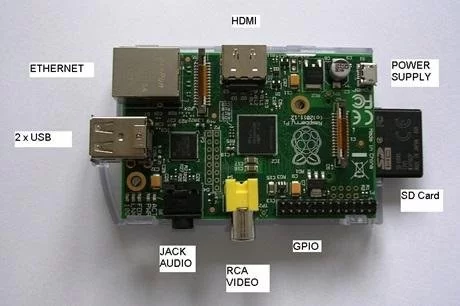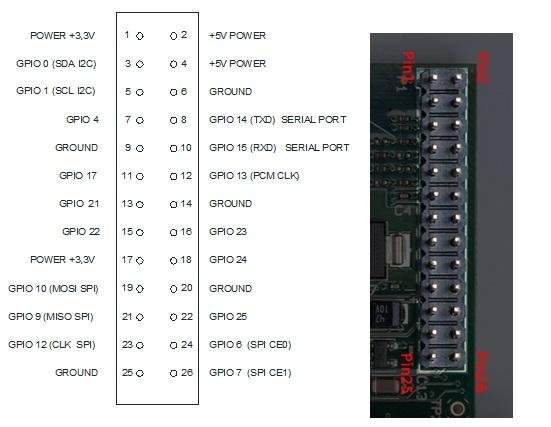WHAT IS RASPBERRY?
Raspberry is a new (one year old), ultra small (credit card size) , and cheap (35USD), Linux computer.
The CPU is an ARM processor at 700MHz with 256 Mb (type A) or 500Mb (typeB) of RAM.
The flavors of Linux for Raspberry are Debian (Raspbian), Fedora (Pidora), RISC OS 5, Arch Linux ARM (derivate de Arch Linux). All in this article is dedicated to PIDORA.
WHAT A RASPBERRY PI DOES NOT HAVE?
– Don´t have Hard Disk but have SD Card, which is enough for Raspberry.
– Don´t have real time clock, but we can make one with ntp (network time protocol) server.
– Don’t have a case included, you must buy apart.
– The fact of don´t have mechanical parts, such us fan coolers or hardisk makes Raspberry strongest, with null hardware maintenance, and with very low electrical consumption (It’s Ecological).
WHAT CAN I DO WITH RASPBERRY?
– Develop programs in languages like C, Java, Python, Perl. It’s ideal for learning.
– Use General Purpose Input / Output (GPIO) Ports for control.
– Use in communications Ethernet, serial port, SPI, I2C.
– Send Emails since command lines.
– MySQL Server for Databases.
– Apache Server for websites server.
HOW CAN I INSTALL PIDORA LINUX
We need a SD card of 4GB or greater in
- Download the SD Formatting Tool from
https://www.sdcard.org/downloads/formatter_4/eula_windows/
-
- Install and run the Formatting Tool on your machine
- Set “FORMAT SIZE ADJUSTMENT” option to “ON” in the “Options” menu
Check that the SD card you inserted matches the one selected by the Tool
Click the “Format” button
Download Pidora From
Introduce the SD card in Raspberry and switch ON the power, then automatically starts to install.http://www.raspberrypi.org/downloads
Unzip pidora-18-r1c.zip
Download the software Win32DiskImager.exe and copy the image of pidora in the SD card for to do that select the unit in witch is the SD card.
http://sourceforge.net/projects/win32diskimager/
HOW CAN I USE FOR CONTROL WITH GPIO
GPIO is General Purpose Input Output, so for example we can control relays with it’s outputs or we can read the state of a switch with it’s inputs.
Watch out the maximum input voltage is +3,3V, if you apply +5V or more, you will burn the GPIO. Check the Circuit Diagram tab to get an example on how to use GPIO Pins.
Layout of P1 pin header GPIO
HOW CAN I INSTALL SOFTWARE FROM THE REPOSITORIES
In PIDORA we use the command “yum” for download and install software.
As root –> #yum install package
If you don’t know the exact name of the package you can use:
# yum search name and then all the packets that contain that name will be shown.
HOW CAN I INSTALL NTP (Network Time Protocol)
This is for to have a real time clock, that synchronize with a real time server in internet.
As root
#yum install ntp For install
#ntpd -qg
Set up to execute in the start
#chkconfig ntpd on
#service ntpd start
Test it
#date
HOW CAN I INSTALL MYSQL
As root:
#yum install mysql-server Install mysql server
#yum install mysql Install mysql client
Activate service and start it
#/sbin/chkconfig mysqld on
#/sbin/service mysqld start
# mysql -u root mysql
mysql> UPDATE user SET Password=PASSWORD(‘your_new_password') where USER='root';
mysql> FLUSH PRIVILEGES;
#mysql -u root -p
mysql> exit
Create for example database with name oscommerce
For more detail: Installing and Using Pidora OS on Raspberry Pi



